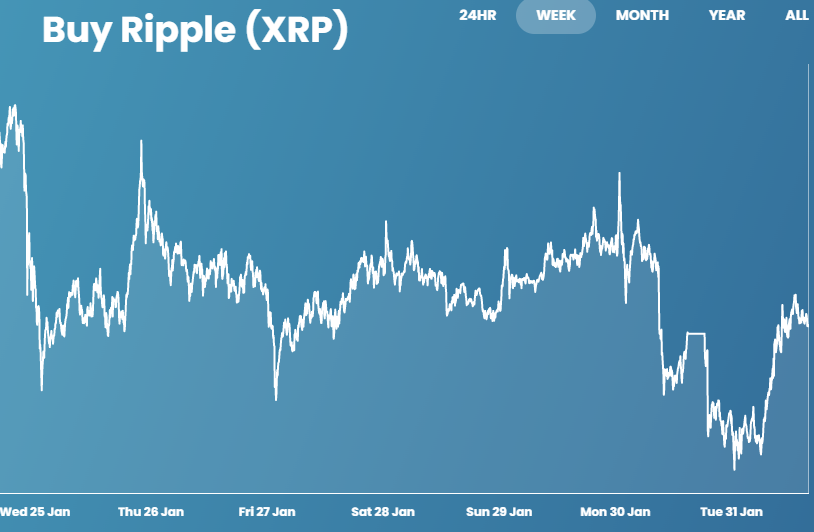What Is XRP? A Comprehensive Guide For Beginners

Table of Contents
XRP is a digital asset built for use on the Ripple network, a real-time gross settlement system (RTGS), currency exchange, and remittance network. It's crucial to understand that while XRP and Ripple are closely related, they are distinct entities. Ripple Labs developed the Ripple network and XRP, but they are not interchangeable terms.
Understanding XRP and its Role in the Ripple Network
What is Ripple?
Ripple is a technology designed to enable fast, low-cost, and secure cross-border payments. Unlike cryptocurrencies like Bitcoin that rely on blockchain technology, Ripple uses a unique consensus mechanism. Its primary goal is to streamline international transactions, reducing the time and expense associated with traditional banking systems. RippleNet, Ripple's payment network, connects banks and financial institutions globally, facilitating seamless currency transfers.
XRP's Function within RippleNet
XRP plays a crucial role in facilitating transactions within RippleNet. It acts as a bridge currency, enabling the efficient exchange between different fiat currencies (like USD, EUR, JPY, etc.) without needing direct conversion pairs for every currency. This bridging function significantly reduces transaction times and fees.
- XRP acts as a bridge currency, converting between various fiat currencies to streamline cross-border payments.
- It reduces transaction times and fees compared to traditional banking systems, making it a cost-effective solution for international transfers.
- RippleNet utilizes XRP to optimize its payment solutions, offering speed and efficiency.
- Bridging currencies with XRP eliminates the need for multiple intermediary banks and their associated fees and delays. The process is faster and more transparent.
XRP vs. Bitcoin and Other Cryptocurrencies
Key Differences
XRP differs significantly from Bitcoin and other cryptocurrencies like Ethereum. While Bitcoin is known for its decentralized nature and focus on peer-to-peer transactions, XRP is designed primarily for institutional use and facilitating fast, efficient cross-border payments.
- XRP focuses on institutional payments, while Bitcoin targets individual users and decentralized transactions.
- Ripple uses a unique consensus mechanism, unlike Bitcoin's Proof-of-Work, which requires significant energy consumption. Ripple's consensus mechanism is designed for faster transaction processing.
- XRP offers greater scalability compared to some cryptocurrencies, meaning it can handle a larger volume of transactions more efficiently.
- The volatility of XRP can vary compared to Bitcoin and other cryptocurrencies. It is generally considered less volatile than Bitcoin, though this is subject to market conditions.
How to Buy, Store, and Use XRP
Exchanges for XRP Trading
Several reputable cryptocurrency exchanges offer XRP trading pairs. It's crucial to choose a regulated and secure exchange. Some popular options include Binance, Coinbase, Kraken, and others (always research and choose reputable platforms).
Secure XRP Storage
Storing XRP securely is paramount. You have several options:
- Hardware wallets: These offer the highest level of security, storing your private keys offline. Ledger and Trezor are popular hardware wallet providers.
- Software wallets: These are more convenient but require careful security practices. Examples include Exodus and Atomic Wallet.
- Exchanges: While convenient for trading, storing large amounts of XRP on an exchange carries inherent risks.
Using XRP for Transactions
Sending and receiving XRP is generally straightforward. You'll need a wallet address to send and receive funds. Transaction fees are typically low, and confirmation times are faster compared to many other cryptocurrencies.
- Purchasing XRP: Research and select a reputable exchange. Verify the exchange's security measures before depositing funds. Always practice strong password hygiene.
- Wallet Comparison: Consider the pros and cons of each wallet type before choosing one. Hardware wallets are safest, but software wallets offer greater convenience.
- Transaction Fees and Confirmation Times: These are generally low and fast for XRP transactions.
- Security Tips: Enable two-factor authentication (2FA) and use strong, unique passwords. Never share your private keys.
The Future of XRP and its Potential
Adoption by Financial Institutions
Many banks and financial institutions are exploring and adopting RippleNet and XRP for their cross-border payment needs. This adoption could significantly impact XRP's future growth and price.
Regulatory Landscape and Legal Challenges
Ripple Labs has faced legal challenges, notably a lawsuit from the Securities and Exchange Commission (SEC). The outcome of this lawsuit could significantly influence XRP's future.
Technological Advancements
The XRP Ledger is continually being developed and improved. Future upgrades could enhance its speed, scalability, and functionality, further solidifying its position in the payments industry.
- Examples of Institutional Adoption: Research the companies already using RippleNet to see the growing integration.
- SEC Lawsuit Summary: Stay informed about the ongoing legal developments surrounding Ripple and the potential impact on XRP.
- Potential Upgrades: Follow the Ripple development updates to stay informed on potential improvements to XRP's technology.
- Future Growth Potential: Analyze the factors contributing to XRP's potential market growth and adoption.
Conclusion
XRP, a digital asset designed for use on the Ripple network, offers a unique solution for facilitating fast, low-cost cross-border payments. While its future is subject to regulatory developments and technological advancements, its potential for widespread adoption within the financial industry is significant. Understanding its role in the Ripple ecosystem and its differences from other cryptocurrencies is key to evaluating its potential. Begin your XRP journey today! Learn more about the world of XRP and its potential to revolutionize international finance.

Featured Posts
-
 Gemeente Kampen Vs Enexis Kort Geding Over Stroomnetaansluiting
May 01, 2025
Gemeente Kampen Vs Enexis Kort Geding Over Stroomnetaansluiting
May 01, 2025 -
 Royal Support For Homeless Prince Williams Scottish Engagement With Gail Porter
May 01, 2025
Royal Support For Homeless Prince Williams Scottish Engagement With Gail Porter
May 01, 2025 -
 Bantuan Persekolahan Tabung Baitulmal Sarawak 2025 125 Anak Asnaf Sibu Terima Manfaat
May 01, 2025
Bantuan Persekolahan Tabung Baitulmal Sarawak 2025 125 Anak Asnaf Sibu Terima Manfaat
May 01, 2025 -
 Open Ais Chat Gpt Takes On Google Shoppings New Frontier
May 01, 2025
Open Ais Chat Gpt Takes On Google Shoppings New Frontier
May 01, 2025 -
 Giai Bong Da Thanh Nien Sinh Vien Quoc Te 2025 Cap Nhat Lich Thi Dau 10 Tran Hap Dan Nhat
May 01, 2025
Giai Bong Da Thanh Nien Sinh Vien Quoc Te 2025 Cap Nhat Lich Thi Dau 10 Tran Hap Dan Nhat
May 01, 2025
